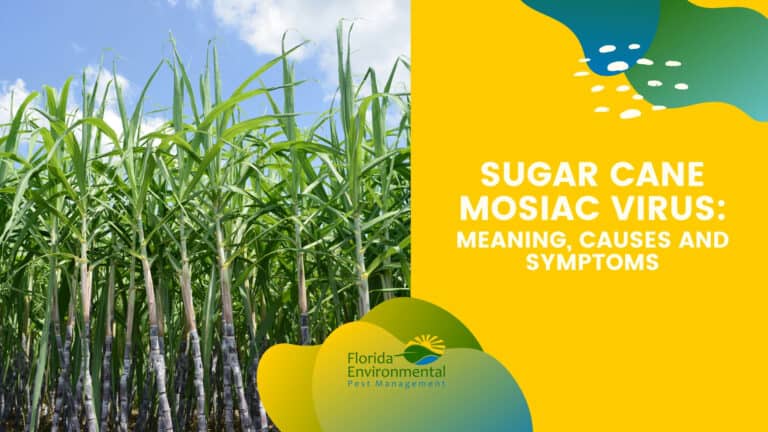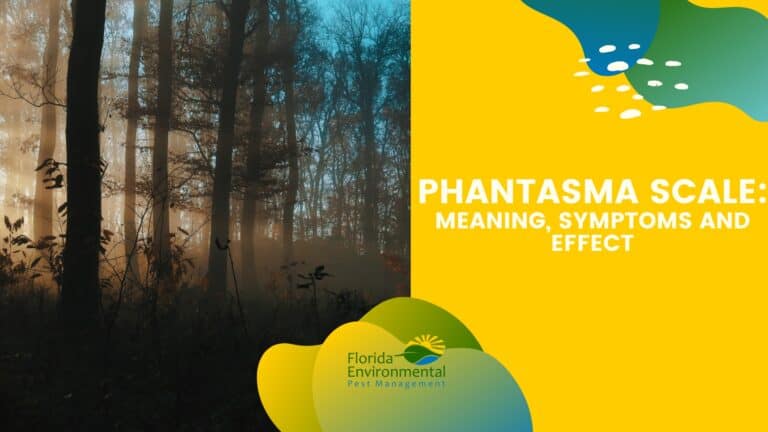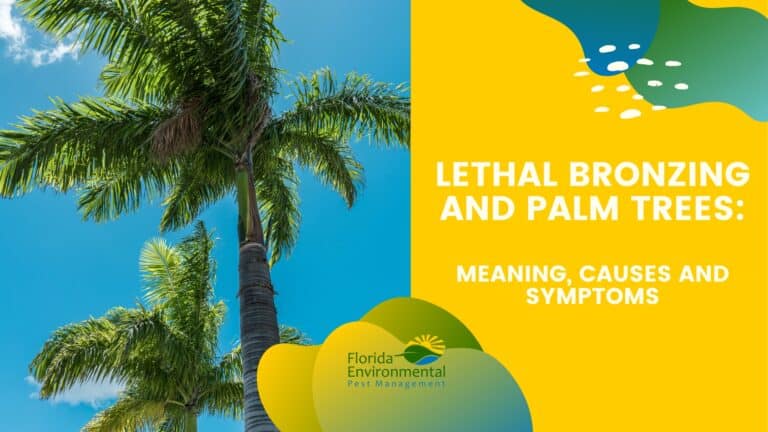If you’re worried about swarming termites infiltrating your Florida home, this is going to be the most informative article you will read. Preparing for termite swarms is really important, especially since Florida super termites have been on the prowl.
Termite infestation is a major concern in Florida and the entire United States for that matter, especially as we get closer to the warmer and rainy seasons.
One thing is to know when the swarmers will come, another, and the most important thing is to know how to prevent them from entering and staying inside your home. This article will show you both.
Let’s start by understanding what termite swarmers are.
What are termite swarmers?
When you hear about a termite swarming, it’s not every kind of termite that makes up the swarm. This is because not all termites fly. Termite swarmers are simply some types of termites that have wings and can reproduce.
Not only can the winged termites fly but they are also the only ones known to reproduce. This is why these types of termites are the most dreadful. They don’t bite, they don’t have any adverse effects on the human body but will raise a colony that will destroy your property.
We have a more detailed article about termite biology and colonies, you can check that out here.
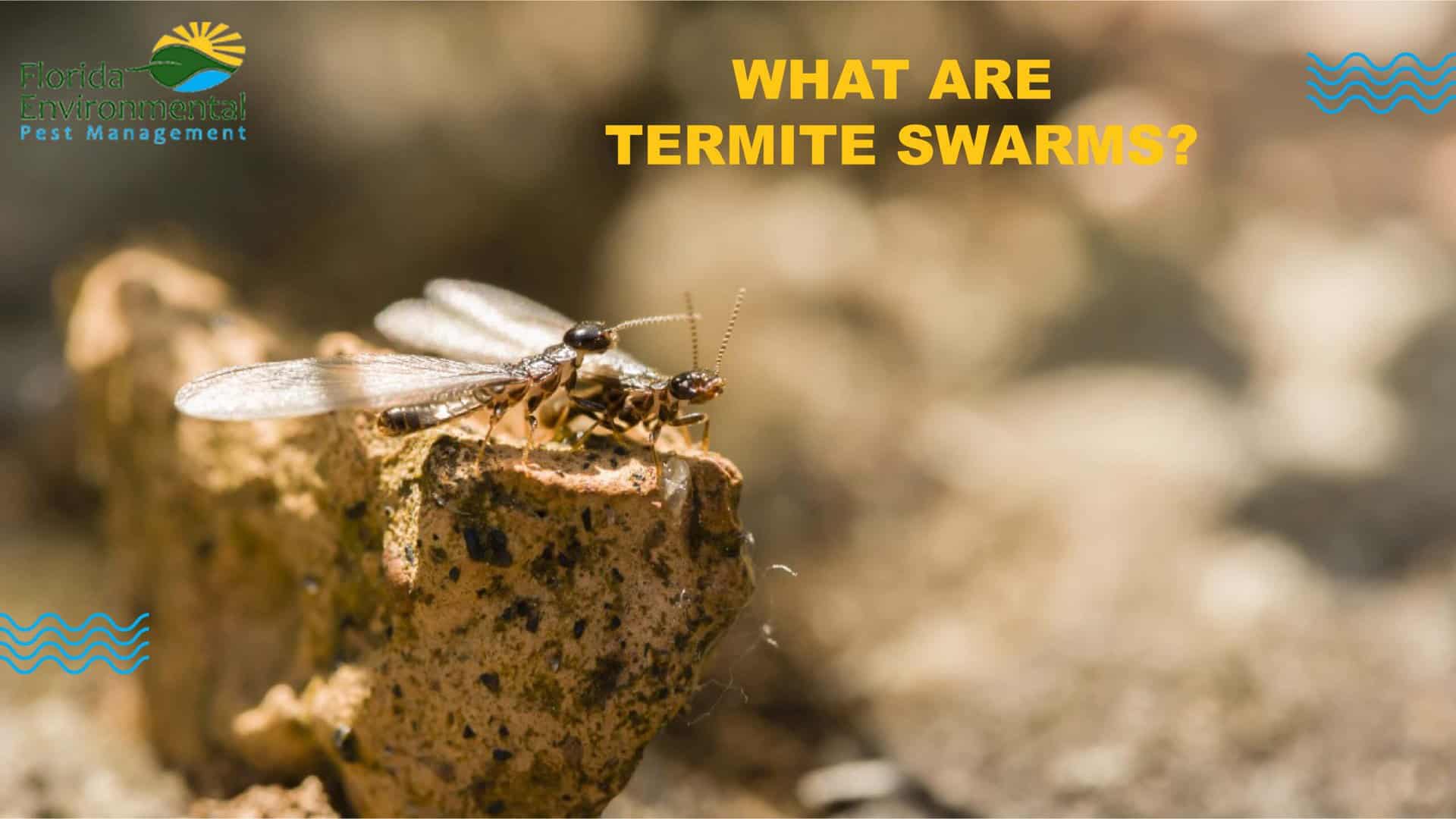
What are termite swarms?
In the termite swarming season, these winged termites will fly around the town or city looking for the nearest place to breed and raise new colonies.
Do you know what’s even more interesting? They’ll find your home inhabitable if it is inhabitable for you. Simply put, termites live in cozy, warm, and dry environments. If your home fits the description, then, it’s time to shield it against a termite infestation.
Now to answer the question of what a termite swarm is. Termite swarms are groups of winged termites flying across town, cities, looking for a new home to form a colony.
A termite swarm will likely last somewhere around 30 minutes to one hour, at which point you may not be at home to stop them. This simply means that what you’ll need is a proactive and preventive measure – this is is what we pride ourselves on at Florida Environmental.
Termite swarms will enter your home through open doors and windows, door & window cracks, soffits, and other openings. This is after about one hour of flying around your porch light, reflective doors/windows, and others.
Blocking these pests from entering your home is the most important preventive measure to take. So, how do you know when it’s termite season and time to stop leaving your doors and windows open?
Different termite species swarm Florida at different times in the year. In the next section, we will be looking at some of the different species that homeowners are likely to find in Florida and when to expect them.
When do termites swarm in Florida?
Termite swarms have been reported every month within Florida, except for December. The Southeastern Drywood Termite relocates at night, typically in the spring. There are three different types of Florida dampwood termite species and all of them swarm at dusk or at night, and many of them swarm year-round. The species Neotermes Castaneus tends to swarm in the late fall or early winter. Some termites will swarm at night, while others, in the day. Some species prefer more humid environments for swarming than others.
Detecting a termite season in Florida can be a bit difficult as areas like South Florida are usually humid and warm the entire year. At the moment, there’s no proven reason explaining why termites choose these periods to swarm homes and because of this, it is necessary to protect your home against all species as early as you can.
7 Florida Termites And Their Swarming Behavior
There are many types of termites in Florida, and many of them have a different termite swarming season. We’ll go over all of the different termites and their behaviors below for Florida homeowners.
1. Asian Subterranean Termite
The Asian subterranean termite has every other characteristic of the regular termite with the only difference being that it has a darker brown color on its back. Asian subterranean termites pose a huge risk to Florida homes.
You will see this termite in large swarms from March to May. This doesn’t mean that you won’t find it in Florida earlier than that. It can be found in areas ranging from the Key West to West Palm Beach of Florida. If you live anywhere in the mentioned areas, you should speak with an expert pest control company.
2. West Indian Drywood Termite
The West Indian Drywood Termite, as the name suggests, thrives in dry woody environments. Unlike subterranean termites that are mostly found in the soil, these drywood termites make their way into your home and locate any structure made from wood for their new residence.
The West Indian Drywood Termite can form colonies of several million termites in your home in the space of one year and you’ll never have any clues until the problem has become almost unmanageable. This is one of the most invasive species and will swarm from March till August.
3. Formosan Subterranean Termite
The Formosan Subterranean Termite is another invasive termite species that swarms from March through June. The Formosan Termites are the most destructive. It’s important that you take measures to protect your property before you have to experience the destruction firsthand.
4. Dark Southeastern Subterranean Termite
This termite species is native to Florida—South Florida to be precise. It’s one of the dark-colored species with a swarming season that starts from late October till mid-June of the following year.
5. Light Southeastern Subterranean Termite
The Light Southeastern Subterranean Termite is very unlikely to cause any termite damage to your Florida home. This is not because they’re less destructive than the other subterranean termites but because of their rarity in Florida. Homeowners should rather be more cautious of and combat Drywood Termites than spend time searching for these subterranean termites.
If he does take up residence, The Light Southeastern Subterranean Termite will set out for a new colony anytime from November to February.
6. Eastern Subterranean Termite
The Eastern Subterranean Termite is one of the smaller and darker-colored termite species with a termite swarm season that begins in the mid-spring and ends towards summer. Some months to be more watchful of these pests will be from November through May.
7. Southeastern Drywood Termite
This species is a cause of worry to most homeowners in South Florida. It may not be the most common, but it has a high termite damage potential. You’ll want to ensure that you’re actively taking steps to protect your home, wood furniture, woods found in the house foundation, and any other wooden structure you have.
These drywood termites can be found all year round but are most commonly seen flying in the spring from March through September.
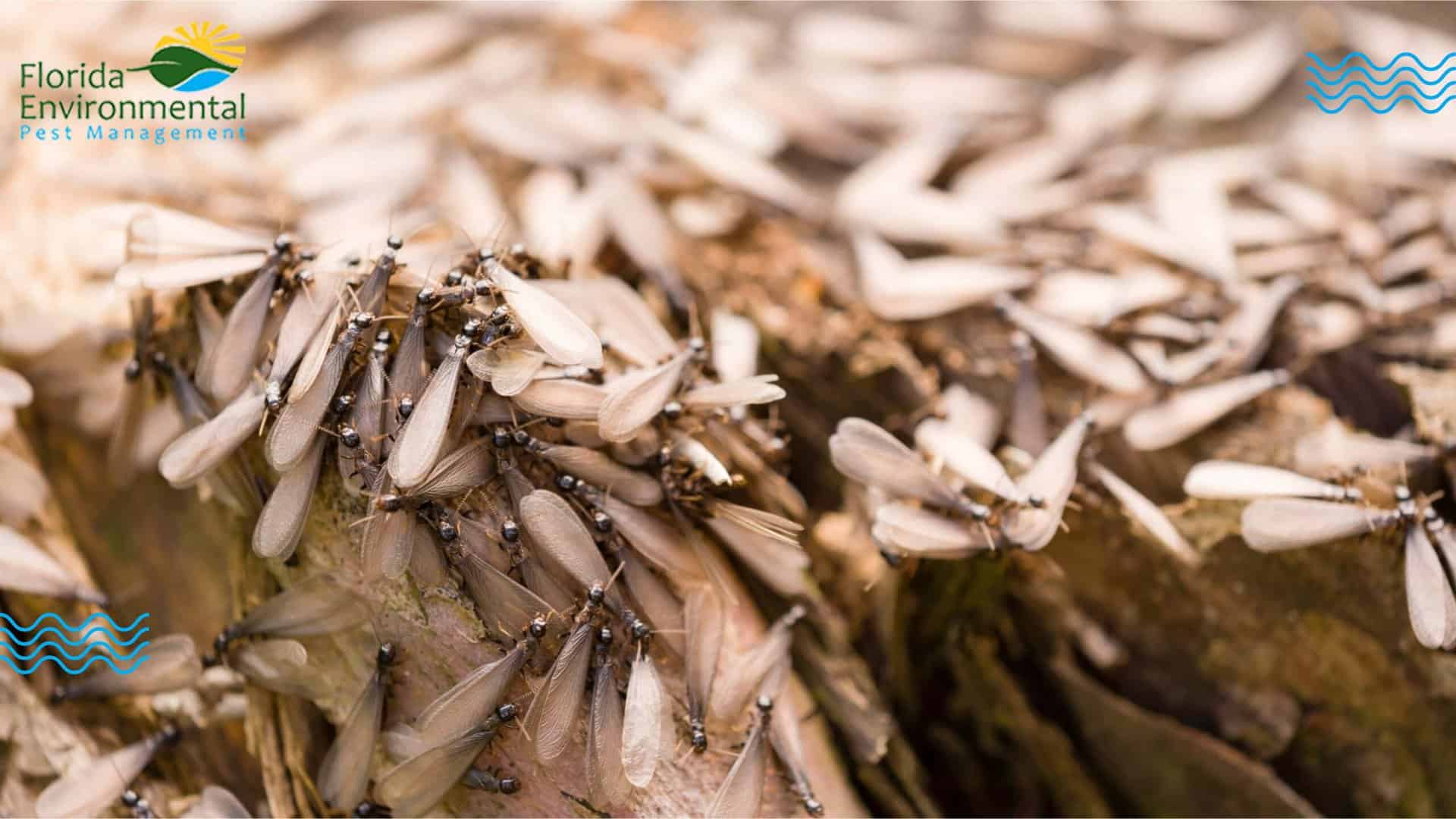
Be prepared for the termite swarming season
First things first. Nothing beats early detection, which is why a thorough inspection of your home by an expert may be all you need to keep your home safe. One of the first signs of termite activity and infestation is discarded wings. If you find broken termite wings around your porch, windows, or on the ground in your garage, there’s a good chance your home has already been infiltrated.
Another sign you will notice is mud tubes around your house. These are termite nests and although this is more common with subterranean termites than with drywood termites, it is a sure sign of an infestation. These pests will build their nests in the soil close to wherever there is a food source (wood).
To brace yourself against any form of termite damage, you should start speaking with a pest control management company as soon as possible. While inspecting and exterminating termites you’ll also be made aware of and interrupt infestations from other pests like ants, roaches, beetles, and many others.
Final words
All species of termites build colonies and will most likely do so in places with food sources, wood, humidity, and warmth. If your Florida home has all these things, the threat of infestations increases from not just termites but other pests as well.
You need a pest control company that can help you prepare for the swarming season. Florida Environment will come into your home and advise you on the best measures to take to avoid extreme cases of infestation. Call Florida Environmental to get a thorough and in-depth inspection today.



